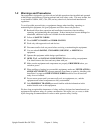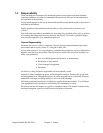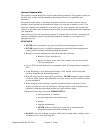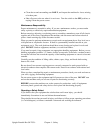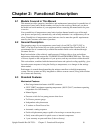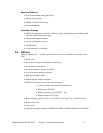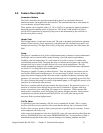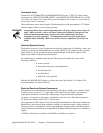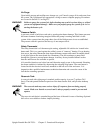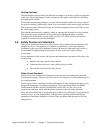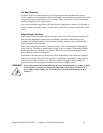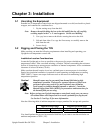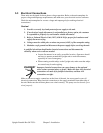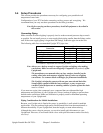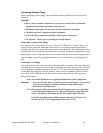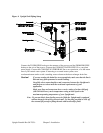
Upright Portable Hot Oil TCUs Chapter 2: Functional Description 14
Air Purge
Upon initial start-up and mold/process change-out, you’ll need to purge all air and water from
the system. The Upright unit has appropriate valving to ensure complete purging. Procedures
are covered in Section 3-5 on Page 23.
WARNING! Failure to purge the system of air before heating may result in serious injury or critical
system and equipment damage. Make sure you properly purge the system of air before
starting the heater cycle.
Pressure Switch
A pressure switch is built into each unit to guard against heater damage. This feature prevents
the heater elements from being energized unless the pump is running and fluid is in the
system. After a preset time, the pump shuts down if the fluid pressure is not re-established.
The pressure switch is preset at the factory; do not tamper with it.
Safety Thermostat
The safety thermostat is a J-thermocouple sensing, adjustable fail-safe device located in the
heater tank. This is to guard against the unlikely event of “runaway” heating. If over-heating
does occur, the safety thermostat shuts down the heater outputs and sounds an audible alarm.
A red pilot light on the status board also illuminates. The unit continues to pump fluid
through the system to prevent heater damage. Auxiliary factory installed alarms such as
beacons and klaxons are available as options.
All controller functions are locked out until the main supply power is disconnected. Resetting
the alarm condition is initiated by depressing the red pump stop button. The reset button is
located inside the electrical enclosure, mounted on the left wall of the enclosure. It is
imperative that a qualified maintenance technician determine and correct the cause of the
fault before resuming operation.
Reservoir Tank
A reservoir tank with sight gauge is standard; usable capacity is seven (7) gallons (26.5
liters). The tank permits thermal expansion of the heat transfer fluid, and provides makeup
fluid.
WARNING! The reservoir tank may cause serious injury if it ruptures from not being properly
vented. Make sure that the reservoir tank is always properly vented to prevent tank
rupture.
The reservoir tank drain is extended beyond the base of the unit for ease of draining. Optional
ball valves are available to further simplify draining
.



